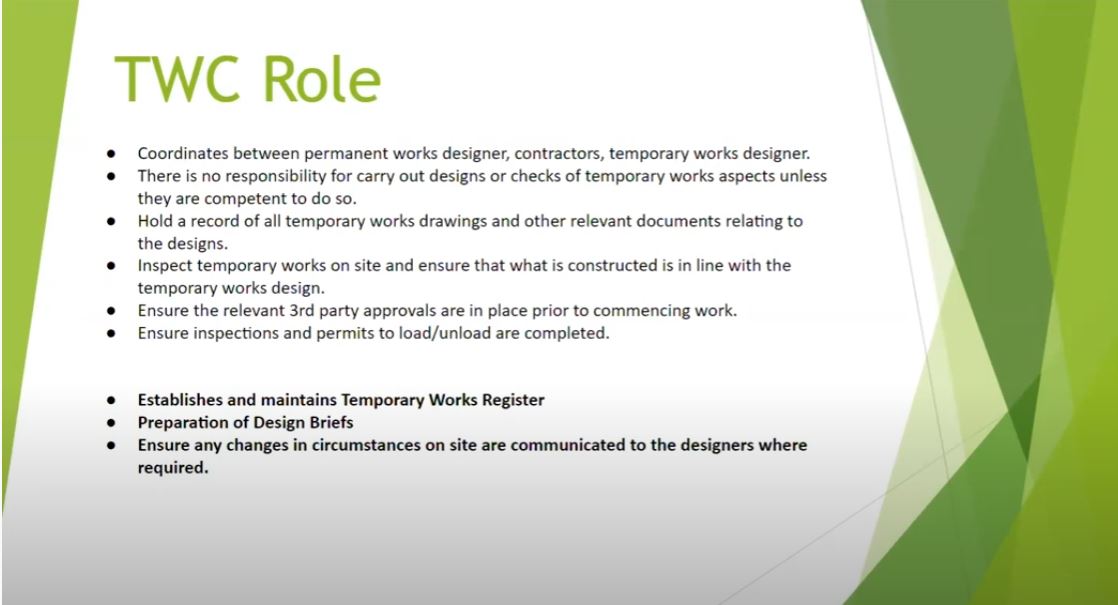The Temporary Works Coordinator (TWC) role is vital to the successful management and implementation of temporary works on construction and demolition projects.
The TWC role is a wide-ranging role with a large number of formal responsibilities which are defined under BS5975:2019
What Is The Role Of A TWC
Whilst the full range of responsibilities are defined under BS5975:2019 here we will look at the aspects of the TWC from a design perspective.
From this perspective, the role of the TWC is to coordinate between the different stakeholders to gather all the information needed to create the temporary works design.
These stakeholders include the permanent works designer, contractors, temporary works designer and anyone else who may be involved with the temporary works on site.
There are no requirements for the TWC to carry out designs or design checks of temporary works unless they are competent to do so.
Throughout the project, the TWC will create and maintain the Temporary Works Register that documents the required temporary works design briefs, drawings and relevant documents relating to the designs.
They are also responsible for inspecting temporary works on site and ensuring what is constructed is done so in line with the approved temporary works design.

Key TWC Role Responsibilities From A Design Perspective
The key TWC responsibilities from a design perspective highlight the importance of having someone on site to coordinate the Temporary Works process.
Particularly creating the design briefs, documenting the drawings and third party approvals through the Temporary Works Register and ensuring that designers are kept informed of any changes on site that may impact on the scheme.
Establish and Maintain the Temporary Works Register
The Temporary Works Register (TWR) is created at the start of each project and should document what Temporary Works are required. It is a live document that should be kept up to date as the project progresses, designs completed in and changes as they happen.
Prepare Design Briefs
The TWC is responsible for ensuring that a design brief is prepared for each TW design. This doesn’t mean they have to produce it, but that they must ensure it is produced.
This is an important document that should contain all the information the designer requires to complete the Temporary Works design. A good design brief facilitates effective designs whereas poor designs typically lead to poor designs.
The more relevant information a brief can provide the easier it is for the designer to design an effective temporary solution. It is of no use issuing 4gb of information to a designer when they only need 4 pages of the information.
Communicate Changes On Site To Designers Where Required
Temporary Works designers do not typically have a site based role that means that they may not be aware of changes on site or to the permanent works designs that deviate from the original design brief.
Making it vital that the TWC informs the designer of any changes that affect the temporary works.


